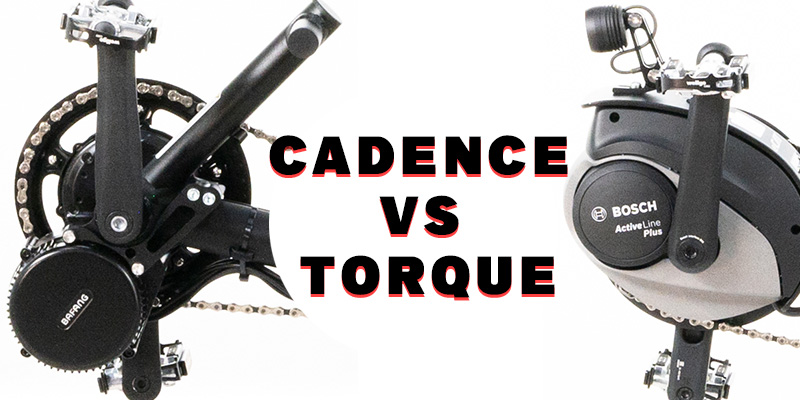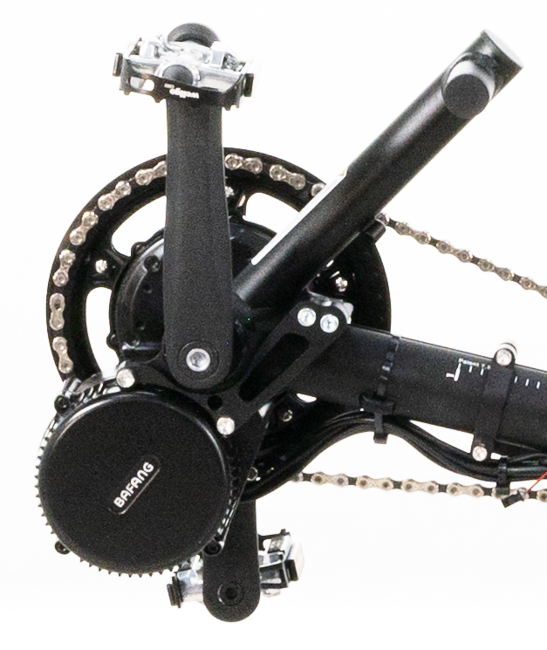

Powerful Electric Bike Motor Guide: Top EBikes and Conversion Kits
Published on 07/15/2024
Tired of traffic and high gas prices? An electric trike with a powerful electric bike motor could be your solution. E-bikes are changing the way we commute, offering a practical and eco-friendly alternative for daily trips. You can bike on hills easily, arrive at work refreshed, and reduce your carbon footprint. We'll help you get familiar with electric motors to find the perfect bike for your routine.
How E-Bike Motors Amplify Your Ride
What exactly is "pedal power" when it comes to e-bikes and trikes? It's the interaction between your effort and the electric motor's assistance. You initiate the movement, and the motor gives you a helping hand.

Two Types of Motor Sensors
Electric bike motors use sensors to detect your pedaling and determine how much power to provide. There are two main types:
Cadence Sensors: These measure how fast you're pedaling (your cadence). They offer consistent assistance based on your pedaling speed, making them a reliable choice for riders who prefer a steady boost.
Torque Sensors: These measure the force you apply to the pedals (your torque). They adjust the motor's assistance to match your effort, providing a more natural and intuitive feel that responds to your input.
While the sensor affects how an e-bike motor performs, it's not the only factor. The motor's wattage, your weight, and the terrain you're riding on also influence the overall pedal power experience. It's a dynamic interplay between you, your trike, and the environment.
What Are Cadence Sensor Motors?
Cadence sensors are reliable workhorses for electric trikes. They measure how fast you pedal and adjust the motor's assistance to match. The faster you pedal, the more help you get. This makes cadence sensors a good choice for riders who want a predictable power boost, regardless of the terrain.
How Does a Cadence Sensor Work?
A small magnet on your trikes's crank arm passes by a sensor on the frame as you pedal. Each pass signals the motor to kick in. Pedal faster, and the motor gives you more assistance. It's a simple system that's easy to understand and maintain.
Pros and Cons of Cadence Sensors
Cadence sensors are a budget-friendly option compared to torque sensors. Their consistent power delivery also offers a familiar riding experience.
However, because they only rely on pedaling speed, they might not feel as intuitive as other systems. When you start from a stop or encounter a hill, you might need to pedal a few times before the motor fully engages. They can also be less efficient, providing assistance even when you don't need it, which can drain your battery faster.

Bafang 750W and 1000W
If you're looking for powerful cadence sensor motors, Bafang is a top contender. Their 750W and 1000W mid-drive motors are popular choices for riders who want a strong and dependable boost. These motors offer impressive torque and acceleration, perfect for hills and long rides. They also let you customize the pedal assist levels to your preference.
If you value power, reliability, and affordability, a cadence sensor motor like the Bafang 750W or 1000W could be a great fit for your trike. They offer a simple and effective way to enhance your pedal power.
What Are Torque Sensor Motors?
Unlike cadence sensors that focus on pedaling speed, torque sensors measure the force you apply to the pedals, adjusting the motor's assistance to match. It's like having a trike that knows when you need extra help and when you're cruising.
How Does a Torque Sensor Work?
Inside the motor, a torque sensor measures the force you exert on the pedals. The harder you push, the more assistance the motor provides. This creates a seamless and natural riding experience.
Pros and Cons of Torque Sensors
Torque sensors are praised for their smooth, responsive power delivery. They offer a natural and intuitive feel, especially when navigating varying terrain or climbing hills. Since the motor only assists when you need it, torque sensors can also be more energy-efficient, potentially extending your battery life.
However, this advanced technology often comes at a higher price than cadence sensor motors. Additionally, torque sensors may require more rider input and engagement, as the motor's assistance is linked to how hard you pedal.

Bosch and Shimano
Bosch and Shimano are the best brands for torque sensors. Bosch's ActiveLine Plus motor is for mountain biking and adventurous terrain. It offers a dynamic and responsive ride, adapting to your pedaling input.
Shimano's STEPS e-bike system is known for its smooth and efficient power delivery. Their motors prioritize a natural riding feel.
If you want an intuitive and responsive ride, a torque sensor motor from Bosch or Shimano could be the perfect addition to your trike.
Cadence vs. Torque Sensors
Let's settle the debate between cadence and torque sensors. Both enhance your pedal power, but which one is the best fit for you? Let's compare them:
Hill Climbing: Torque sensors excel. They match your effort, making steep climbs easier.
Long-Distance Riding: Torque sensors have the advantage due to their efficiency, helping you cover more ground.
Technical Trails: Torque sensors offer superior control and responsiveness on tricky terrain.

Which Motor Is Right for You?
The "best" motor depends on your preferences.
If you mostly ride on flat terrain or gentle hills and want an affordable option, a cadence sensor might be a good choice.
Meanwhile, if you tackle challenging terrain, value a natural riding feel, and have a flexible budget, a torque sensor could be ideal. Cadence sensors are generally more budget-friendly, offering good power for the price.
The best way to decide is to test-ride e-bikes with cadence and torque sensors. Feel the difference yourself and see which one suits your riding style and goals. The most preferable motor is the one that makes you want to ride more.
The Ultimate Solution
So, are you ready to supercharge your rides? With the right powerful electric bike motor, you can conquer hills, explore new trails, and rediscover the joy of cycling. Whether you're a casual cruiser or a seasoned pro, there's a motor out there that will complement your style. So, get out there, test-ride some bikes, and find the motor that will make your rides even more enjoyable.




